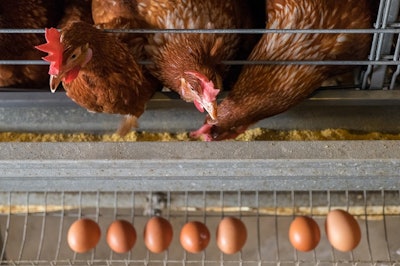
Almost 50 million birds have been depopulated due to the spread of highly pathogenic avian influenza (HPAI) in the U.S. in 2022, with wild bird migration being the number one cause of infection.
Elevating wild bird control programs on the farm level was discussed by Steve George, food and agriculture consulting company Dynamis Inc. President and CEO, at the American Egg Board (AEB) and United Egg Producers (UEP) 2022 Joint Annual Executive Conference.
Bringing wild bird control plans to the same level as biosecurity or pest control plans on the farm will be important to preventing the spread of HPAI, explained George. “If we can elevate our wild bird control plans, track data and measure results with the same level of intensity as our other programs, we will see results,” he said.
To begin or enhance a biosecurity plan, George suggests contacting your state biologist concerning what improvements have been made in wild bird control and what can be implemented on the farm. Additionally, he advises to contact the U.S. Department of Agriculture’s (USDA) Wildlife Services Division.
“The Wildlife Services Division of the USDA is authorized and trained to resolve bird issues. It has professional biologists and technicians that are experts in moving birds away from specific areas. You can have them come to your farm and do an assessment to find the risks.”
Wildlife Services can provide recommendations for wild bird control, are able to remove nests and can apply direct control methods to prevent birds from coming into the area.
Additionally, George provided four factors related to HPAI that producers should think about when assessing and reducing the risk of infection from wild birds or other outside sources. Considering the inputs that could increase the risk of infection can also help producers strengthen their wild bird mitigation programs.
- Mass reservoir – How big is the population of wild birds in the area? What are the migration patterns and overall infection rates?
- Carriers – How many outside animals, humans or other vectors are allowed the area?
- Transmission incidents - How many situations have potentially exposed the farm to HPAI?
- Barriers – What prevention or biosecurity measures are in place? Do they involve wild bird control?
George added, “For example, if the number of wild birds in your area doubles, so does the risk of infection.”


















